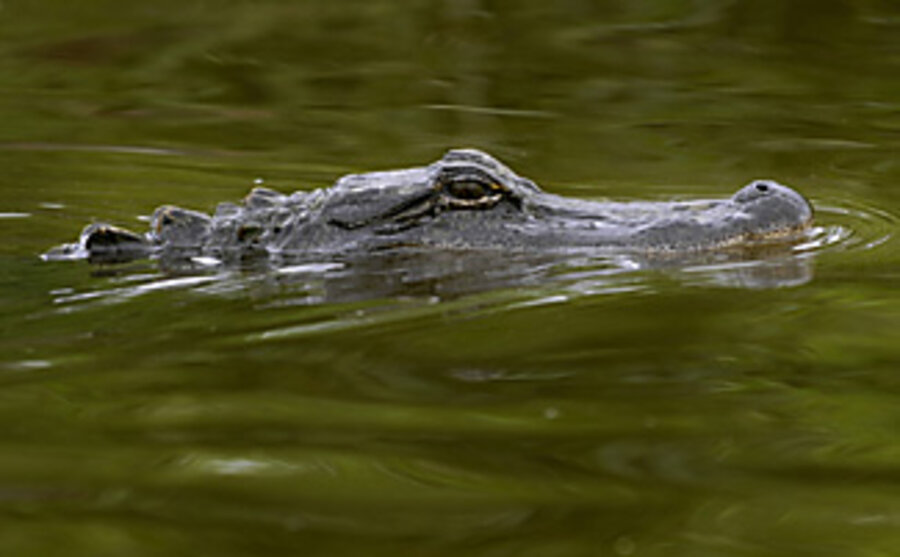On the horizon: news from the frontiers of science
Loading...
Core strength of gators
Down on the bayou, gators earn a lot of respect; they can sneak up on you with hardly a ripple in the water.
But without fins or flippers, how do they do it? By using their internal muscles to shift their lungs, according to researchers at the University of Utah. They change buoyancy by using their internal muscles to move their lungs fore and aft or port and starboard of their center of gravity. Lungs forward brings the gator to the surface; lungs astern helps them dive.
Scientists have focused on one muscle in particular, which some thought was an evolutionary holdover from the days when early crocodile-like reptiles were cat-sized and skittered around the countryside. It was just put to a new use. But the new study suggests an alternative: that the muscles in question evolved after these creatures took to the water. The results are set to appear in the April issue of the Journal of Experimental Biology.
These snails invade creatively
Few people ever have much good to say kabout invasive species. Now, however, a team of French scientists say they have found at least one species that could be a "hot spot of evolutionary creativity."
Typically, they argue, biologists have suggested that invasives lack genetic diversity for critical traits such as fertility, size of young, and onset of reproduction. But the French team found that an invasive freshwater snail on Martinique displays an enormous amount of diversity for these traits, apparently stemming from several invasions of different varieties of the Asian snail. Interbreeding has led to unique blends of characteristics. The team holds that these snails actually show greater diversity in the basic life-shaping traits than most other animals they studied. They don't deny the harm invasives can do. But they also say their work adds to a growing body of evidence that invasives also have their biologically creative side as well. The results appear in the current issue of Current Biology.
Corn's gulf impact
Addressing environmental problems always seems to involve trade-offs. For the pursuit of ethanol, here's another potential gotcha: expanding the size of the Gulf of Mexico's annual "dead zone."
Scientists at the University of British Columbia and the University of Wisconsin looked at the energy bill President Bush signed in December and its goal of producing 36 billion gallons of ethanol a year by 2022. They analyzed the impact it could have on nutrients from farm runoff. Nutrients in the runoff flow down the Mississippi and Atchafalaya Rivers and feed algae in the Gulf. When the algae die, they decompose, which uses up oxygen in the water. Low-oxygen waters are fatal to organisms like shellfish.
If the US meets its ethanol goals without reducing other demand for corn, the amount of nutrients flowing into the Gulf of Mexico could rise from 10 to 34 percent above today's level. The results of the study appear in the current issue of the Proceedings of the National Academy of Sciences.
Global Climate regulator?
The Gulf Stream may play a more important role in the global climate system than people thought. That's the conclusion from researchers in Japan and the US, who used weather and satellite data, along with Japan's "Earth Simulator" supercomputer, to gauge the Gulf Stream's influence.
For the most part, the researchers say, the current's effect on temperatures and weather patterns are most obvious in the marine boundary layer, which covers roughly the first 5,000 feet above sea level. And its influence on weather over countries bounding the Atlantic Basin – from the US East Coast to Western Europe – are well known. But after reviewing the data and running modeling experiments, they find that the Gulf Stream's influence reaches well into the upper troposphere. There, it appears to set up conditions that can influence larger-scale circulation patterns.
The team says that unraveling the current's longer climatological reach could be important for figuring out what might happen if the Atlantic Ocean's deep-ocean circulation slows, as global-warming models project. This larger circulation spawns and sustains the Gulf Stream. The results appear in today's issue of the journal Nature.





